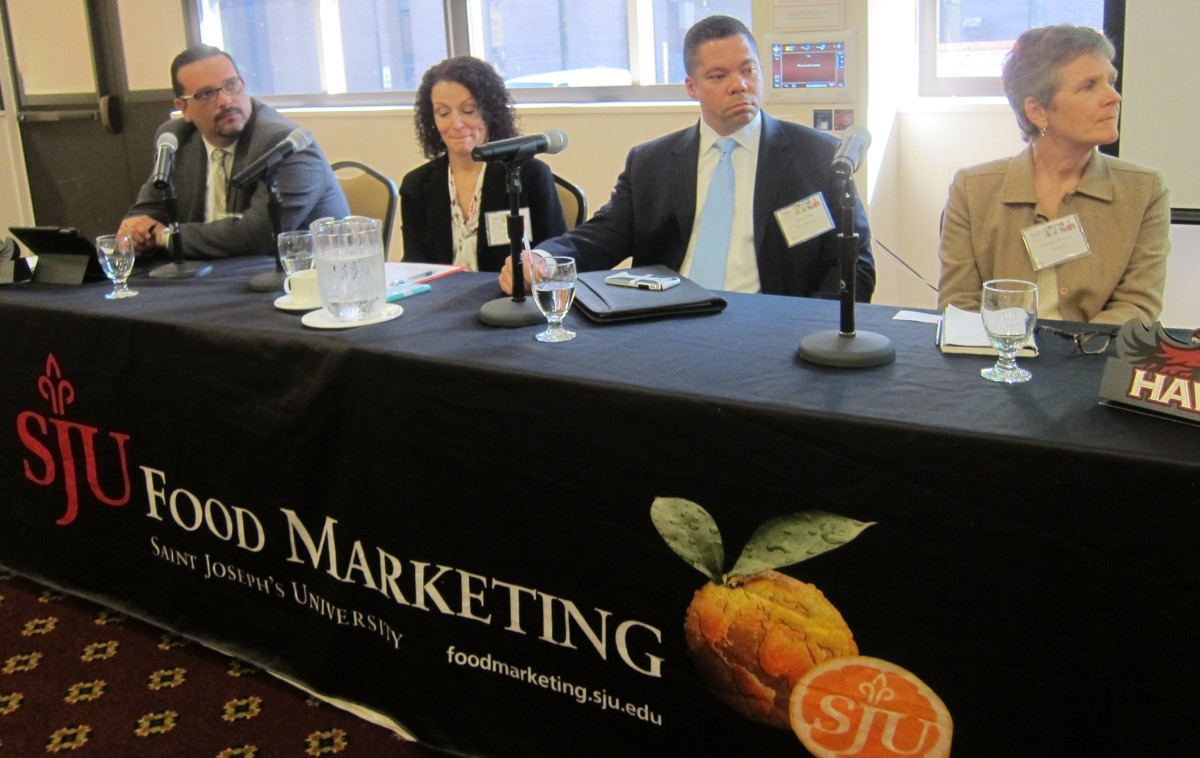“Build the basket.”
“Get on the list.”
In seven words, that’s the advice a panel of grocery ecommerce veterans gave to area food retailers during the “Bricks & Clicks” panel discussion/fundraiser at Saint Joseph’s University Tuesday.
The low profit margins in the grocery industry and the high labor costs associated with assembling and delivering online orders make large purchases or shopping “baskets” in the virtual world even more important than they are in bricks-and-mortar supermarkets.
“Obviously it’s much better from a profitability standpoint to have a $200 order versus a $100 one,” said Peg Merzbacher, vice president of regional marketing for Peapod, the online partner of local Giant Food Stores and many other U.S. supermarkets. And grocery eshoppers do, in fact, spend “from two to three times more than even our top shoppers in the store,” she said.
One possible reason: Peapod.com shoppers are “disproportionate” buyers of pricy organic and natural foods.
Merzbacher and the three other panelists also stressed the importance of shoppers’ online lists of purchased products. Unlike paper shopping lists, online ones persist and “most shoppers order off them,” Merzbacher said.
Fellow panelist Scott Iovine, a business development exec at Camden’s Campbell Soup Company, recommended social media as a cost-effective way for food manufacturers to get their products on those lists. His company now has a team of people who monitor and act on trending culinary topics. “When they saw chicken parmesan getting some buzz, we posted a recipe for that dish using our products,” Iovine said.
Since canned soup is “heavy and cheap,” Campbell’s has also created some new multi-packs specifically for ecommerce. The higher price point helps spread out delivery costs and “enables us to be more successful online,” Iovine said.
Local supermarkets face their own challenges in going online.
Wakefern Digital Innovation Manager Donna Zambo said up to 20 percent of the offerings in one of her cooperative’s local ShopRite supermarkets might be unique to that store. Managing a single website serving more than 150 such stores, means “a lot of complexity,” she said.
At the same time, established grocers have relationships and resources they can bring to their online business that startups lack. Merzbacher said Peapod has recently teamed up with pasta-maker Barilla to create meal kits using Barilla products and fresh in-store produce and meats. They’ve also partnered with local farmers to deliver boxes of fresh, local vegetables. She likened the former to Blue Apron’s meal ingredient service, and the latter to a CSA, but without their subscription model or the need to make any longterm commitment.
Online shopping for groceries is still small — only about 4 percent of all grocery shopping nationally.
For the 36 Weis supermarkets — many Pennsylvania-based — that offer the service it’s only 5 percent, according to Weis Marketing VP Brian Holt, another panelist.
So, worthy cause aside (the event raised money for St. Joe’s Academy of Food Marketing and the Mid-Atlantic Food Trades Association’s food marketing scholarships), why the sell-out crowd? Online sales at Weis and Wakefern and others are growing “exponentially,” panelists said.
St. Joe’s panel explores promise and peril of online grocery shopping







